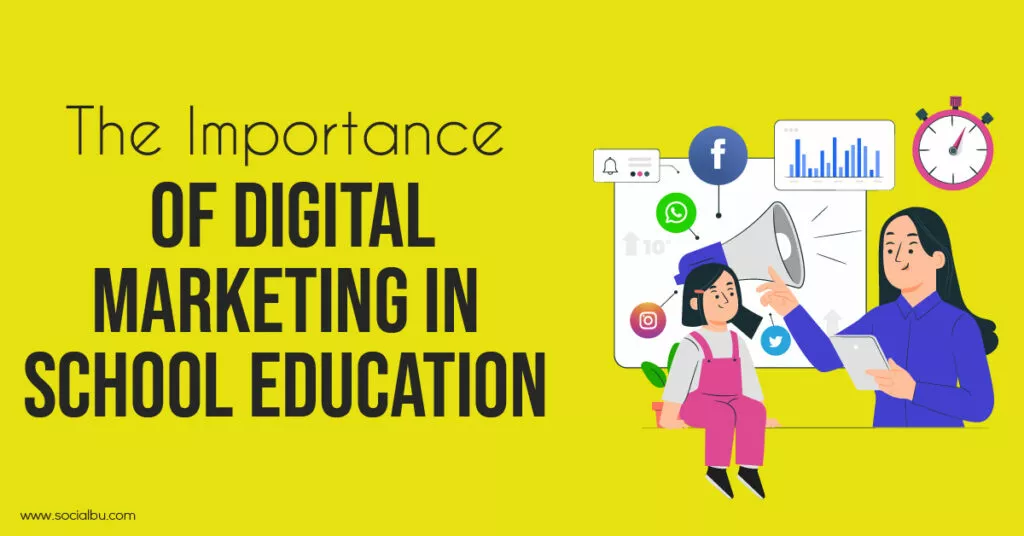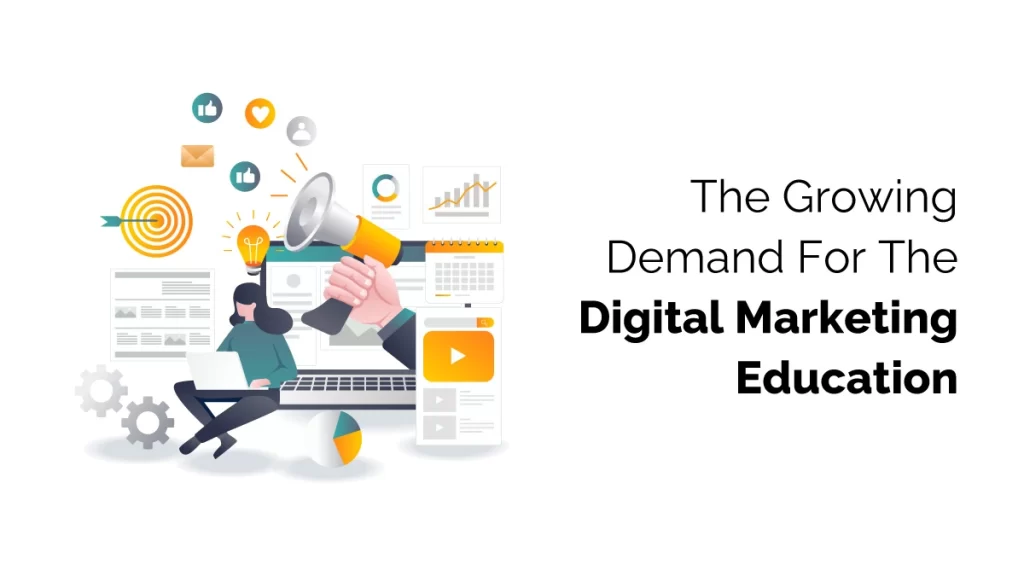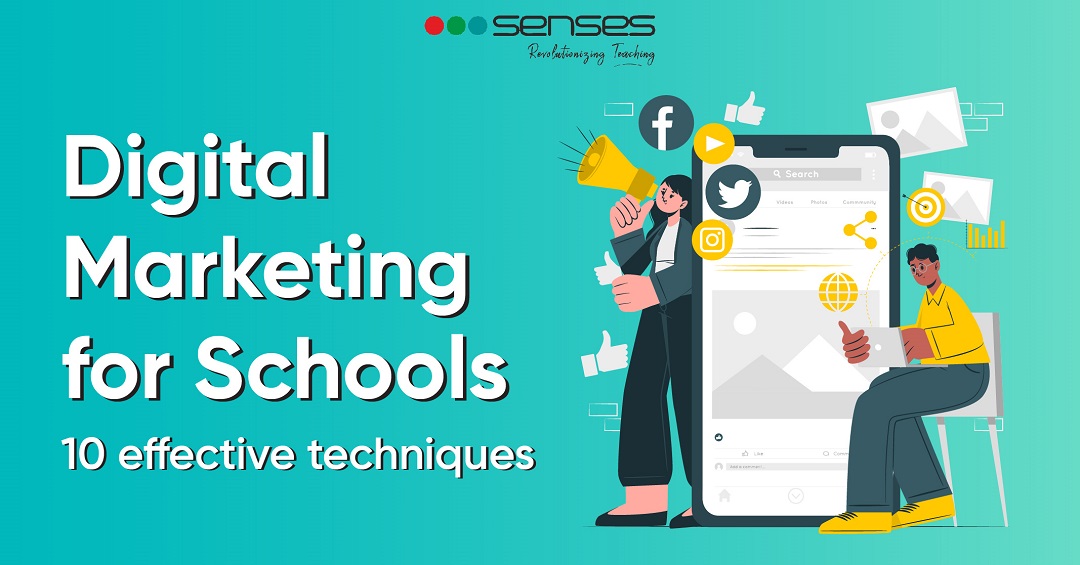
Discover why introducing digital marketing in school curricula is crucial to equip students with real-world skills and prepare them for future careers. In an era where the internet dominates communication, commerce, and creativity, students must be more than just users of technology—they must become innovators and leaders within the digital space. Teaching digital marketing fosters skills like critical thinking, content creation, data interpretation, and ethical communication, giving students a competitive edge. As industries shift toward automation and AI, this knowledge will become essential for workplace readiness and entrepreneurship. Schools that integrate digital marketing into their curriculum will not only future-proof their students’ careers but also redefine how education connects with the modern world.
Table of Contents
Sr. Headings
1) Introduction
2) The Digital Shift in Education and Society
3) Benefits of Digital Marketing Education in Schools
4) Core Digital Marketing Skills for Students
5) Digital Literacy vs. Digital Marketing
6) How It Enhances Creativity, Communication & Critical Thinking
7) Career Pathways and Entrepreneurship
8) Case Studies: Countries and Institutions Leading the Way
9) Curriculum Integration Models
10) Challenges, Risks, and Ethical Considerations
11) The Future of Education: Aligning with Industry Trends
12) Recommendations for Policymakers and Educators
13) Conclusion
14) FAQs

Introduction
In today’s digital-first world, where our lives are increasingly shaped by screens, algorithms, and online communities, the importance of understanding digital dynamics is more crucial than ever. Young people are growing up in a hyper-connected society, often engaging with content, trends, and platforms without ever learning how they work behind the scenes. This knowledge gap limits their potential not just as future professionals but as informed citizens of the digital age.
Introducing digital marketing in school curricula empowers students to become proactive participants in the online world—whether that means building a personal brand, starting a small business, managing school events through social media, or simply making informed decisions in a saturated digital landscape.
In the 21st century, where every brand, business, and individual strives for a digital presence, the question is no longer if digital marketing should be taught in schools—but how soon. Digital marketing is not just about promoting a product; it’s about understanding audiences, crafting messages, solving problems creatively, and analyzing data. It’s an interdisciplinary skill that encompasses technology, psychology, communication, and commerce.
This blog explores why digital marketing belongs in the modern school curriculum, how it aligns with future job demands, and how it can transform education into a real-world, purpose-driven experience.
The Digital Shift in Education and Society
Digital transformation is affecting every domain of life. Social media, online shopping, and AI-powered apps have changed how we interact, learn, and make decisions. Education must evolve to reflect these changes.
While subjects like math, science, and history remain vital, they must be complemented by modern skills that reflect the realities of our digital economy. Digital marketing is one such skill that builds both literacy and employability in the digital age.
The digital shift refers to the widespread integration of technology into education and society. In education, this transformation includes online learning platforms, digital classrooms, and virtual resources, making learning more accessible, flexible, and personalized. In society, it has changed how people communicate, work, shop, and access information. This shift promotes global connectivity, lifelong learning, and digital literacy, but also raises concerns about digital divides and the need for responsible technology use.
The digital shift marks a significant transformation in how education and society function, driven by rapid advancements in technology and the internet. In education, traditional classrooms are evolving into hybrid or fully digital environments, with tools like Learning Management Systems (LMS), video conferencing, AI-driven learning apps, and e-books replacing or complementing conventional teaching methods. This has expanded access to quality education, enabling students to learn from anywhere and at their own pace.
At the same time, society is experiencing a parallel shift. Digital technologies are reshaping industries, communication, healthcare, governance, and everyday life. People now rely heavily on digital platforms for work (remote jobs, freelancing), social interaction (social media, messaging apps), commerce (e-commerce, digital payments), and entertainment (streaming, gaming). The shift has accelerated innovation and productivity but also brought challenges like privacy concerns, digital addiction, misinformation, and a growing digital divide between those with and without access to technology.
Overall, the digital shift is creating a more connected, informed, and fast-paced world, requiring new skills, adaptability, and responsible digital citizenship.
Benefits of Digital Marketing Education in Schools
1) Cultivates 21st-century skills (SEO, social media, email marketing, copywriting)
2) Bridges the gap between theory and real-world application
3) Encourages entrepreneurship at a young age
4) Provides early career exploration and certification opportunities
5) Increases digital awareness and safe online practices

Core Digital Marketing Skills for Students
By introducing digital marketing in secondary education, students can learn:
1) Search Engine Optimization (SEO)- 2) Content Marketing and Blogging
- 3) Social Media Management
- 4) Pay-Per-Click Advertising (Google Ads, Meta Ads)
- 5) Analytics and Data Interpretation (Google Analytics)
- 6) Video Marketing (YouTube SEO)
- 7) Affiliate and Influencer Marketing
Digital Literacy vs. Digital Marketing
While digital literacy teaches students how to use technology, digital marketing teaches them how to influence, communicate, and drive action in a digital space. This advanced application of digital tools sets students apart in a competitive environment and fosters digital creators, not just consumers.
Digital Literacy refers to the ability to effectively use digital tools, platforms, and technologies. It includes basic computer skills, internet navigation, online communication, information evaluation, and understanding digital safety and privacy. Digital literacy is essential for education, daily life, and most modern jobs.
Digital Marketing, on the other hand, is a strategic field that uses digital channels (like social media, search engines, websites, and email) to promote products or services. It involves skills such as SEO, content creation, online advertising, and analytics to reach and engage target audiences.
Digital Literacy = Knowing how to use digital tools effectively.- Digital Marketing = Using digital tools to promote and grow businesses.
How It Enhances Creativity, Communication & Critical Thinking
Marketing campaigns require storytelling, strategic planning, and persuasive messaging. Students must research, analyze target audiences, ideate content, and evaluate performance. These processes promote cross-functional thinking and collaborative skills that benefit all areas of life.
Career Pathways and Entrepreneurship
The global digital marketing industry is worth over $500 billion and continues to grow. Teaching students about:
-Freelancing opportunities (SEO, content writing)
-YouTube channel or blog monetization
-Building and promoting their own online store
-Certifications (Google, HubSpot, Meta)
…gives them a competitive edge and potential income streams even before graduation.
Case Studies: Countries and Institutions Leading the Way
United Kingdom: Some secondary schools include digital media and marketing modules
India: Institutes like OCP Academy offer simulator-based courses for teens
USA: Vocational high schools offer digital marketing certification tracks
Curriculum Integration Models
Schools can implement digital marketing through:
Elective subject under business or ICT
Interdisciplinary projects involving English, economics, and computer science
After-school clubs and hackathons
Guest sessions by industry professionals
Challenges, Risks, and Ethical Considerations
Infrastructure limitations (computers, internet access)
Teacher upskilling and curriculum design
Monitoring student activity for safety and ethics
Avoiding screen time overload
Navigating data privacy and online consent
The Future of Education: Aligning with Industry Trends
The World Economic Forum lists digital marketing and data analysis among the top 10 skills of the future. Aligning school education with these trends will make education more relevant, engaging, and outcome-oriented.
Recommendations for Policymakers and Educators
1) Partner with edtech platforms and local businesses
2) Include digital marketing in national education frameworks
3) Encourage teacher development programs
4) Offer student-led social media management for school events


Students can begin learning foundational skills around ages 12–14, with deeper knowledge built in high school.
No, most tools are user-friendly and require no coding. However, basic understanding of HTML can help with SEO and blogging.
Google Digital Garage, Canva, HubSpot Academy, SEMrush Academy, Google Ads, and Google Analytics offer free resources.
Encourage exploration, enroll them in free online courses, and support their passion projects like YouTube channels or blogs.
Offer valuable downloads like technical guides or case studies in exchange for email sign-ups on your website or LinkedIn.
Conclusion
Digital marketing is not just a career skill—it’s a life skill in the modern era. As students navigate a world dominated by digital interaction, equipping them with the skills to understand, influence, and shape digital ecosystems is essential. Digital marketing blends creativity with strategy, communication with technology, and theory with action.
Furthermore, introducing digital marketing education in schools helps foster resilience, adaptability, and self-expression. Students become active learners and digital citizens who can build personal brands, launch initiatives, and meaningfully contribute to their communities. They are also more likely to pursue higher education or career paths with confidence, backed by a portfolio of real-world experience.
This shift isn’t just about employment—it’s about empowerment. A future-ready education system must bridge the gap between traditional teaching and modern industry needs. Digital marketing offers that bridge.
The future belongs to creators, not just consumers. It’s time education evolved to reflect that.
OCP Academy
(A Unit of OCP Foundation)
Learning Today, Leading Tomorrow

